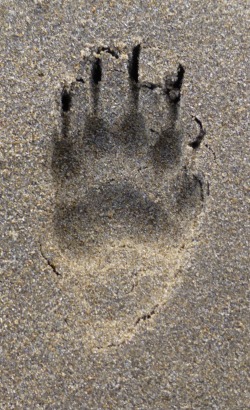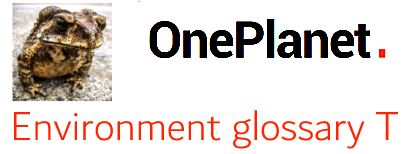OnePlanet is for people who speak English as a second or third language
A B C D E F G H I J K L M N O P Q R S T U V W X Y Z CLICK for list of all the words
T is for: |
: |
think tankWhere campaigning organisations like the WWF inform the public and change public opinion, think tanks like these inform governments and change their opinions. This is "lobbying". Environmental think tanks do independent research and give scientific advice. "Environmental" think tanks get their money from the energy industry or manufacturing industry, very often they can't even understand the science, and their job is to support industry by creating doubts about complex environmental issues. Words for this include "greenwash", "green backlash" and "environmental hijacking". The most powerful lobbying group in the world is funded by the **** brothers, owners of a certain US oil company, who make US$110 billion (110 billion US dollars) a year. I should say "Charles ****" as one of them died in 2019. In the 10 years to 2017, they gave $127,006,756 to 92 organisations that create doubts about climate change and global warming, such as the C*** Institute think tank. And that's just the direct donations that appeared on the **** brothers IRS 990 tax records. Money for the same purposes is also given anonymously through D****s Trust and D****s Capital Fund. Between 2002 and 2010, they distributed nearly US$120 million to more than 100 groups that create doubt about climate change and global warming. It's a dirty business. Many people think that the **** brothers were behind the "Climategate" affair, and behind millions of tweets by automated "bots" on Twitter which say that climate science is fake science. In Climategate, computer hackers stole thousands of emails and other documents from the Climate Research Unit at the University of East Anglia. Small parts of them were released to create more climate change doubt. It was said that they showed the scientists were dishonest. Investigation by 8 different committees found that the scientists were honest. However, Climategate succeeded, because it created more doubt in people's minds. Similar tactics have been used in the past about asbestos, about the Nazi party in Germany and about cigarettes. The fact that the police and intelligence services have never discovered who is guilty of Climategate or the bot tweets indicates that they were done by top professionals. Obviously I don't think that the **** brothers' security team was guilty of this. I'm sure both **** brothers are or were terribly nice people who like to plant trees, watch wildlife programs on TV and visit little old ladies in hospital. However they did have the MMO (the motive, the means and the opportunity). A think-tank is not environmental if: - It is funded by industrial corporations which need to cause major environmental damage in order to survive, or - Its mission statement contains the words "growth", "wealth", "law", "legal, "citizen", "freedom" or "liberty", or - Everybody who works there is an an economist, an analyst, a statistician, a lawyer or a media or public relations expert, or - It mainly advises coal and oil companies, and industries that use a lot of coal and oil, or - It has zero interest in the natural world (which is like trying to run a spaceship but having zero interest in the life-support system) - It supports new technology and infrastructure, but does not support education, contraception, social equality, changing consumer attitudes or moving towards a sustainable economic model. A think tank does not need to be environmental, or even to think, to appear in the Top Environment Policy Think Tanks section of the University of Pennsylvania's TTCSP Global Go To Think Tank Index. For example, it includes the Adam Smith Institute. Smith was an 18th century economist who is often called "the Father of Capitalism", and the ASI does not exist to protect the environment. They are advocates for a free-market economy. At least one senior ASI person sees carbon dioxide emissions, global warming and climate change as a purely economic problem. I'm not joking; here's a quote from their website. It's from a 2016 blog post that was still online in 2020. The title is "People Still Aren't Understanding Climate Change". The author is not the boy who makes the tea at the Adam Smith Institute; according to Wikipedia, he is a Senior Fellow of the Adam Smith Institute and he went to the London School of Economics. He criticises the Intergovernmental Panel on Climate Change, saying "...it's the people insistent that they know all about climate change who are getting it wrong at a basic logical level ... All of the economists who look at this economic problem keep insisting that we should not have a temperature nor emissions target. We should and must have a cost target." That's like not doing anything when a house is on fire because you have a belief that "the market will provide a solution". See my page of jokes about economists. It is ironic that Adam Smith (1723-1790) believed in a steady-state economy, not in the economics of "Give me more, more, more, more!". Smith lived in a simpler world, with an enormous gap between rich and poor. He was an academic who did not have much common sense; on a factory visit, he once walked into a pit of chemicals and had to be helped out, and he once put bread and butter into a pot of tea and tried to drink it (he said it was the worst cup of tea he ever had). He did not foresee the industrial revolution, or the green revolution in agriculture, or the explosive population growth of the 20th and 21st centuries, or a consumer society, or globalisation, or the use (and end) of oil, or global warming and climate change. He was probably a nice man. He was not a radical free-market economist, a libertarian or a neoliberal. It is sad that the ASI uses his name, and it is sad that they have close links with industry and with the British government. |
 |
tracksThe footprints of an animal are called its tracks. The easiest to see are tracks in sand, like the otter tracks in the picture; and tracks in mud, or in snow. How do we know the tracks in the picture were made by an otter and not by a fox, a badger, a small dog, a large cat, a pine marten or a mink? My handprint shows how big the tracks are. They are too big for a mink; they have too many toes for a fox or a dog (foxes and dogs have 4 toes on all feet), and you can see the marks of the claws, so it's not a cat. A cat has retractable claws, and it only uses them to hunt, fight, or climb a tree. Badger tracks are a different shape, more square. The tracks are like those of a pine marten, but pine martens are much rarer than otters, and they never live very far from woodland. These tracks were on the end of sandy peninsula, 7km from the nearest tree, with a river on one side and the sea on the other. Perfect for an otter. It was slowing down at this point. Otters have three gaits on land. They walk, they gallop and they bound. When an otter walks, the footprints are right-left-right-left and they are all the same distance apart. When an otter bounds, you find prints of all four feet together, then a long gap, then all four feet together again, then another long gap. This otter was galloping at the bottom of the photo, but walking at the top. |
 |
...New words every week; CLICK HERE for a full list |
 |
* |
* |
A B C D E F G H I J K L M N O P Q R S T U V W X Y Z CLICK for list of all the words
